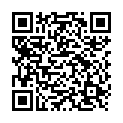|
|
|
| Module code: MAA-4.x.6 |
|
1V+1U (2 hours per week) |
|
3 |
| Semester: 1 |
| Mandatory course: no |
Language of instruction:
English |
Assessment:
Student research project
[updated 30.07.2021]
|
MAA-4.x.6 Architecture, Master, ASPO 01.10.2012
, semester 1, optional course
|
30 class hours (= 22.5 clock hours) over a 15-week period.
The total student study time is 90 hours (equivalent to 3 ECTS credits).
There are therefore 67.5 hours available for class preparation and follow-up work and exam preparation.
|
Recommended prerequisites (modules):
None.
|
Recommended as prerequisite for:
|
Module coordinator:
Prof. Dipl.-Ing. Eve Hartnack |
Lecturer:
N.N.
[updated 06.03.2013]
|
Learning outcomes:
After successfully completing this module, students will have found and developed their own artistic and intellectual interests and means of expression.
They will have developed and tested adequate forms of presentation and documentation for creative/artistic projects.
They will, in particular, learn about the possibilities of interaction between analog and digital media. These forms of representation are recognized in the process of architectural design not only as final means of description, but also as competing techniques and tools of design. Students will be aware of the connections between the design and presentation of their own ideas in a cross-media form.
[updated 30.07.2021]
|
Module content:
Creative and conceptual amalgamation of content, its process-like development and its aesthetic expression. The combination of classical means of presentation and electronic media. Their meaning in architectural design and its presentation and application in creative experiments.
Ways of combining classical and modern means of design experimentally in order to realize sophisticated design processes and forms of expression The search for interactions and positive synergy effects of diverging concepts.
Different types, materials and joining techniques in model making. Abstraction types of the different presentation techniques in the different phases and scales of design. Suitable tools for the presentation of the final result.
[updated 30.07.2021]
|
Teaching methods/Media:
Guided tutorial
[updated 30.07.2021]
|
Recommended or required reading:
Topic-specific literature recommendations will be announced at the beginning of each thematic block.
[updated 30.07.2021]
|


